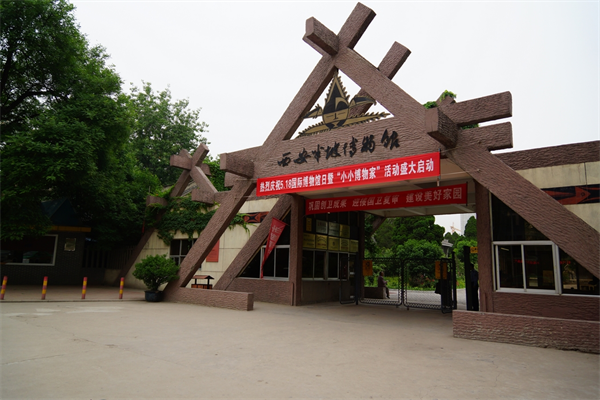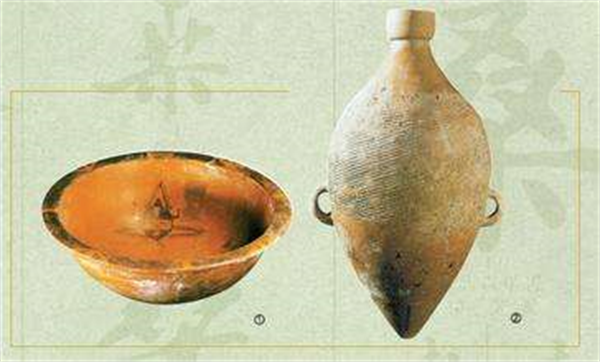The Matriarchal Clan Society During the Neolithic Age—Banpo Man
With the development of the primitive society, human beings began to produce more advanced tools. It helped them enter a new stage which is called the Neolithic Age by the academic circle to differentiate it from the previous Paleolithic Age during which Lantian Ape-man and Dali Man lived.
The Neolithic Age, a period in the Stone Age named for the tools used by people during the period, can be further divided into the Matriarchal Clan Society and the Patriarchal Clan Society according to marriage custom and family system. In Matriarchal Clan Society, females enjoyed high social status because females took charge of the family and children took their mothers’ name as the family name for they even didn’t know who their fathers were. The well-known Banpo prehistoric site in Xi’an is a centuries-old village site of the Matriarchal Clan Society existing in 6,000 to 7,000 years ago. The village was large enough to hold hundreds of residents and its villagers are believed to have lived mainly on farming. In the site, archeologists found carbonized millets and cabbage seeds, which are the earliest unearthed crop specimen in the world. Studies by scholars from China and other countries prove that China was one major initiator of farming and in the history many crops originally planted in Shaanxi were gradually introduced to other parts of China and later to the rest of the world.

Remains of the Banpo Village covers an area of 50,000m2 with a residential section of 30,000m2 on which 46 house remains have been found. The restored houses have “gable roof” and “wood pillars with mortar wall” structure, which was the embryonic form of the classical Chinese wood -frame architectural structure. Meanwhile, the traditional architectural elements such as the “one bright room and two dark ones” and “front porch and back room” layout can also find their trace in Remains of the Banpo Village. All the remains showcase the wisdom of Banpo Man and their contribution to the development of human civilization. Bone needles and cloth veins on pottery jars, for instance, manifest the beginning of textile industry in China. The primitive inscriptions illustrate the original ways of Banpo Man to keep records by knotting the thread or carving marks and signs on wood planks. These ways serve as the starting point of the ancient Chinese writing system. The shuttle-shaped bottle with two pointed ends and bulgy belly provides great ease for fetching water from the river for it conforms to the principle of barycenter and balance in mechanics. Pottery Xun, an egg-shaped wind instrument with holes on it, is the earliest musical instrument excavated in China. Zeng, an earthen utensil for steaming rice in ancient China, proves the earliest practice by Banpo Men to cook with steam. All these discoveries demonstrate the splendor of ancient Chinese civilization and the creativity of ancient Chinese.

Another well-known contemporaneous Neolithic Age site is Jiangzhai Village Site located at the foot of Lishan Mountain in Lintong District, Xi’an City. Covering an area of about 50,000m2 with a relics layer of about 3 to 4 meters thick, it is the largest Neolithic Age site in China. The site consists of three sections: the residential section, the kiln section and the graveyard. The residential section roughly forms a large circle of about 20,000m2 with orderly layout. Excavation archeologists found more than 10,000 tools and daily utensils including polished stone tools and various bone tools. Most of the daily utensils are ceramics and some of them are exquisite polychrome ones with fish, bird or calabash patterns which had never been found on earlier potteries. It is quite rare in archeological history to find such a well-preserved large primitive village site of orderly layout and long continuity.

Xi’an Banpo Museum
In Banpo and Jiangzhai sites, large batches of exquisite polychrome ceramics with intricate patterns were excavated, which display the ancients’ preliminary mastery of scientific rules in their daily practice and their simple aesthetic consciousness. Among the potteries, the most eye-catching one is the basin with the pattern of a human face but a fish body. Although the debate on the meaning of the mysterious decoration on the cover of a prehistoric urn, which was used for burying premature death, is still going on since the 1950s, the basin has been recognized as a masterpiece of prehistoric art and has therefore became the logo of Remains of the Banpo Village in Xi’an.

If we look up Remains of the Banpo Village excavated in the 1950s and Jiangzhai Village Site excavated in the 1970s as the proof of the prosper of Yangshao Culture in the Neolithic Age, Yangguanzhai Site, which was unearthed in 2004 and selected one of the “Top Ten Archeological Findings of China in 2008”, can be regarded as representing the acme of civilization over that age. Yangguanzhai Site is located on one terrace of Yangguanzhai village, Gaoling County, Shaanxi Province. Covering an area of about 800,000m2, the site has now exposed about 17,000m2 of its whole coverage to show 49 houses, 896 ash pits, 9 ditches, 19 pottery urns, 33 urn coffins, 45 graves, 5 wells and more than 7,000 pieces of cultural relics. Among these pieces, the basin-shaped utensil with hollowed human face carvings, the polychrome pottery basin with animal patterns and the pottery with vermilion human face patterns were rarely found in other sites of the same age. The most important discovery in the site is the super clan settlement along the ring moat. Preliminary excavation showed that the ring moat generally ran from north to south with a trapezoid cross section. The moat runs about 1,945 meters with an average width of about 6 to 9 meters. The widest part of the moat stretches about 13 meters with a depth of 2 to 3 meters. The area inside the surrounding moat is about 245,000 square meters. Such large well-preserved residential site along the ring moat has never been found before and some archeologists claim that Yangguanzhai Site is perhaps the earliest large-scale city in Chinese history.


